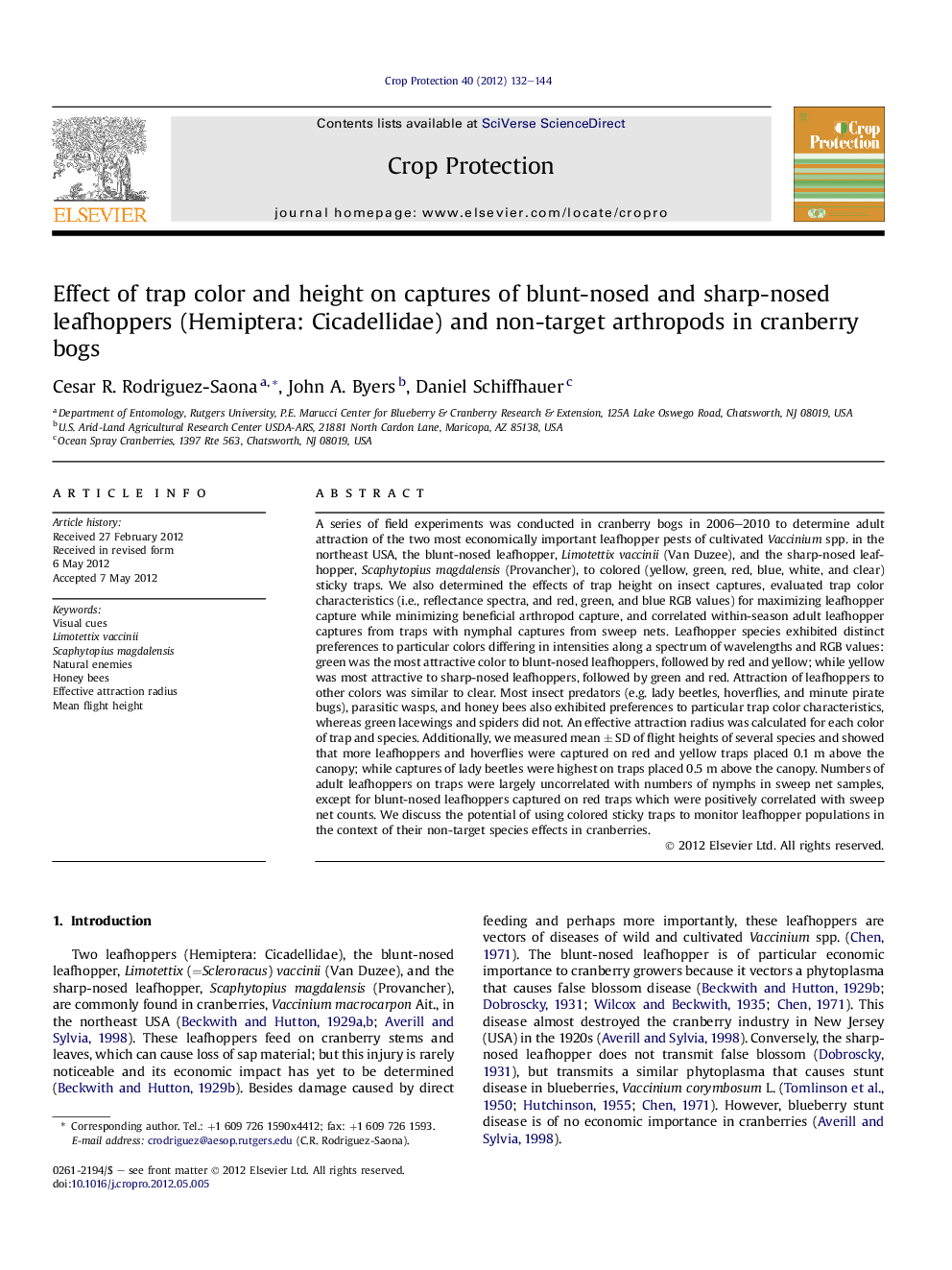| Article ID | Journal | Published Year | Pages | File Type |
|---|---|---|---|---|
| 4506327 | Crop Protection | 2012 | 13 Pages |
A series of field experiments was conducted in cranberry bogs in 2006–2010 to determine adult attraction of the two most economically important leafhopper pests of cultivated Vaccinium spp. in the northeast USA, the blunt-nosed leafhopper, Limotettix vaccinii (Van Duzee), and the sharp-nosed leafhopper, Scaphytopius magdalensis (Provancher), to colored (yellow, green, red, blue, white, and clear) sticky traps. We also determined the effects of trap height on insect captures, evaluated trap color characteristics (i.e., reflectance spectra, and red, green, and blue RGB values) for maximizing leafhopper capture while minimizing beneficial arthropod capture, and correlated within-season adult leafhopper captures from traps with nymphal captures from sweep nets. Leafhopper species exhibited distinct preferences to particular colors differing in intensities along a spectrum of wavelengths and RGB values: green was the most attractive color to blunt-nosed leafhoppers, followed by red and yellow; while yellow was most attractive to sharp-nosed leafhoppers, followed by green and red. Attraction of leafhoppers to other colors was similar to clear. Most insect predators (e.g. lady beetles, hoverflies, and minute pirate bugs), parasitic wasps, and honey bees also exhibited preferences to particular trap color characteristics, whereas green lacewings and spiders did not. An effective attraction radius was calculated for each color of trap and species. Additionally, we measured mean ± SD of flight heights of several species and showed that more leafhoppers and hoverflies were captured on red and yellow traps placed 0.1 m above the canopy; while captures of lady beetles were highest on traps placed 0.5 m above the canopy. Numbers of adult leafhoppers on traps were largely uncorrelated with numbers of nymphs in sweep net samples, except for blunt-nosed leafhoppers captured on red traps which were positively correlated with sweep net counts. We discuss the potential of using colored sticky traps to monitor leafhopper populations in the context of their non-target species effects in cranberries.
► Experiments in cranberry bogs determined attraction of leafhoppers to colored traps. ► Effects of trap height on captures of leafhoppers and non-targets were determined. ► Blunt-nosed and sharp-nosed leafhoppers exhibited distinct preferences to colors. ► More leafhoppers and hoverflies were captured on traps placed just above the canopy. ► The potential of colored traps to monitor leafhoppers in cranberries is discussed.
